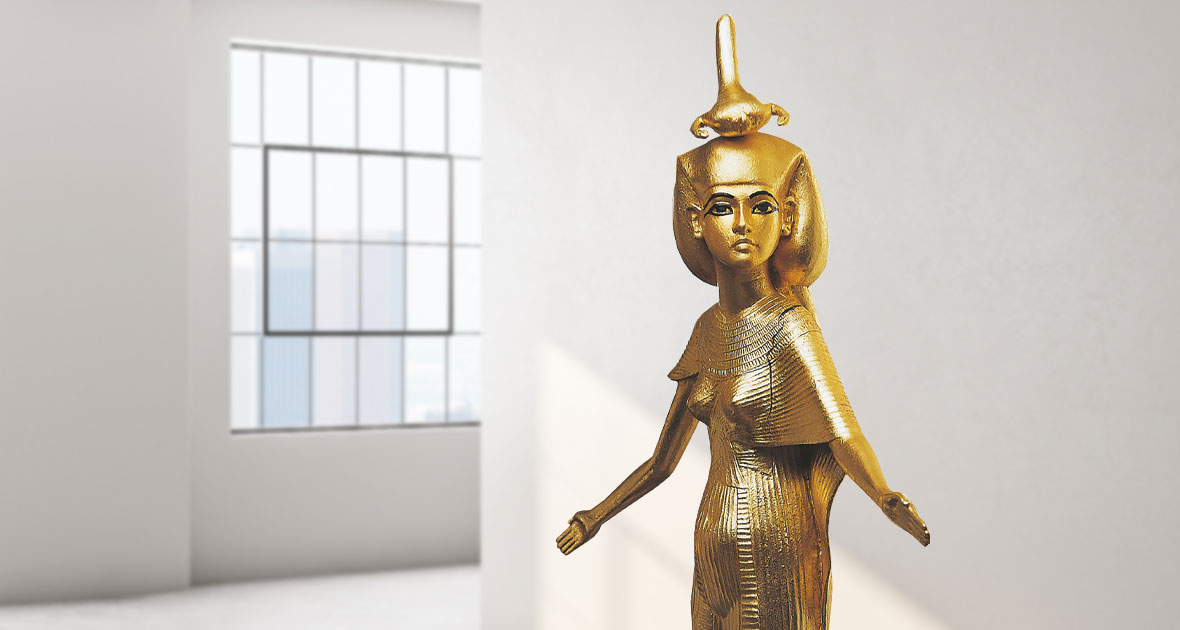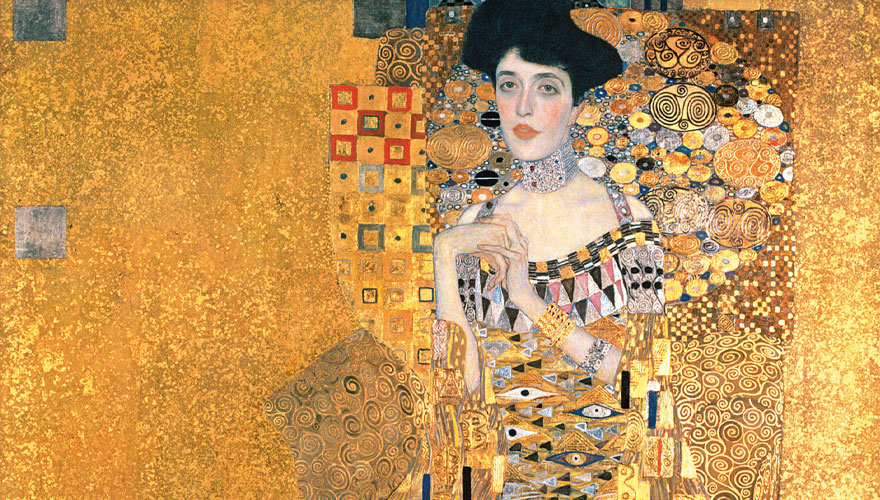
Gold in Art: Paintings and Sculptures in a Golden Glow
People have always been fascinated by the precious metal gold. It is considered rare and valuable and has thus become the epitome of fame and wealth. Moreover, its use as a means of payment, its popularity as a material for jewellery and its tradition in art go back thousands of years.
The popularity of gold is certainly primarily due to its unique colour, subtle shine, and material value. In addition, gold has always had great symbolic power among people, for example, in many religions or mythology. Some religions see gold as a direct expression of the divine, while other cultures associate gold with magical properties and compare its shine with the sunlight.
The importance of gold for many religious communities becomes evident in the fact that gold is often used as decoration in sacred buildings and many liturgical or ritual objects such as crosses, chalices, or grave goods. Furthermore, the symbolism of the precious metal has been a key factor in gold painting and sculpture, and its material qualities ensured that gold became an extremely popular material in the arts.
Gold Has Been Used as a Material in Art for Thousands of Years
Gold offers several advantages over other metals for use in painting and sculpture. First of all, it already occurs in nature in a form in which it can be processed directly. That means that it does not have to be mixed with other metals to form an alloy. Gold, along with copper, is, therefore, one of the first metals people used to make tools, jewellery, and other objects. Another advantage is the resistance of gold as a material used for everyday objects, paintings, and sculptures. It does not rust and can therefore last for several centuries without changing. Although gold is exceptionally durable, it is exceptionally good and easy to work with. Since it is relatively soft, it can be easily shaped - for example, rolled, hammered, or processed into a powder. With these properties, gold is suitable for both painting and sculpture.

Techniques and Methods of Gold Painting and Sculpture
There are different methods how to use this precious metal in gold painting. In the Middle Ages, artists often used gold only for the background of their paintings. They rolled it out into gold leaf and applied it to the canvas. The actual motifs, such as scenes with people or landscapes, were then painted on this neutral but intensely shining so-called "gold ground". This technique is particularly well known in religious icon painting and panel paintings.
However, gold can also be used as a creative element in a similar way to oil paints or tempera paints. Thus, gold leaf is equally effective when it comes to designing motifs or adding accents and appliqués to pictures. Well-known examples of this process are the paintings "Adele Bloch-Bauer I" and "The Kiss", for which the Art Nouveau painter Gustav Klimt partially used gold leaf.
Moreover, gold has a long tradition in sculpture. As in gold paintings, sculptors use gold for their sculptures in a variety of ways. Sculptures made of solid gold are well-known in many cultures. Here, the artist melts the gold and casts it in a mould or engraves it. Often, they even covered objects made of wood or metals with gold leaf and then polished them. A famous example of gold sculpture is the death mask of Tutankhamun from Ancient Egypt.
The Peak Period of Gold Art and its Renaissance in the 20th Century
Even though gold was generally extremely popular in the visual arts, there were phases in art history when it became somewhat out of fashion. The first uses of gold in art are documented in Ancient Egypt. Here, gold was mainly used in connection with the worship of gods and pharaohs or for sarcophagi, and grave goods. Furthermore, Greek antiquity is known to have used gold as a material for ornaments on statues.
Gold had its first peak in Europe in art from the first century A.D. In the following centuries, gold was frequently used in art not least because of its many meanings. For example, the precious metal served as a symbol of the sun, light, constancy, wisdom, wealth, or the divine being. However, from the 15th century onwards the popularity of gold in art began to decline. At that time, the conviction prevailed that gold, with its strong and idiosyncratic lustre, outshone all other colours and disturbed the impression of the picture. Further reasons mentioned in the literature for rejecting the use of gold in the art are the discrepancy between the high value of the material and the intellectual demands of fine art. It also mentions the elitist image of gold as a valuable precious metal that was only reserved for the upper classes. This stigma lasted until the beginning of the 20th century.
The first approaches to gold were recognisable, among others, in Gustav Klimt's "Golden Phase". From the 1950s onwards, other artists joined in. Robert Rauschenberg, one of the most important artists of Pop Art, created his famous "Gold Paintings" and James Lee Byars was almost lavish with the gold leaf when creating his expansive abstract sculptures. Since the 1980s at the latest, gold has been completely rehabilitated in art, and today more artists work with gold than at any time since the Middle Ages.
There are major exhibitions on the theme of "Gold in Art", such as "The Golden Age" in Stuttgart in 1991 or "Gold" at the Belvedere in Vienna, and gold museums such as the famous "Museo del Oro" in Bogotá enjoy great popularity among the public.
